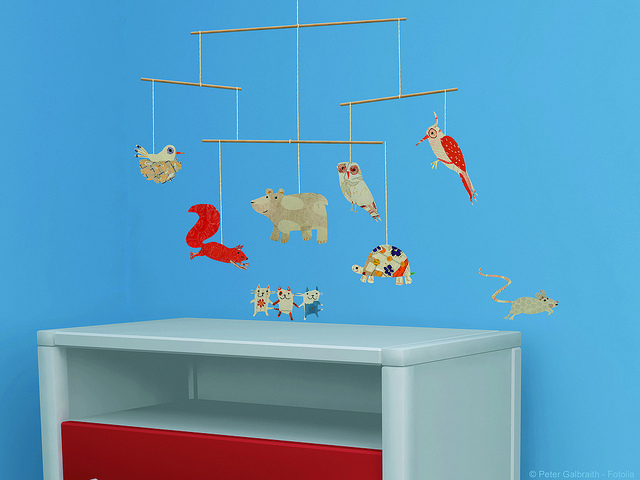Planning your child’s bedroom could well put you in a spot. It could turn out to be more difficult than planning your home décor! So here’s a wee bit of help! A child’s bedroom – we are talking about a pre-teen to teen room – has to include an element of fun and yet should be cozy, comfortable and aesthetic. It should also have some provision to be changed as the child grows up.
Today, there is so much available by way of décor items that doing up a room could become something your child and you could bond over! In fact, letting your child know that you respect his or her wish for self expression is a good confidence building measure for him/her. So what should you do and how do you go about the task?
First remember that the furniture must fit in with the room and, second, it must include all those little details that your child needs to convert it into his or her own personal domain. A little imagination and some careful planning will result in a colourful and cheery room that reflects your child’s personality.
Here are some guidelines… The money factor: This is all important. If you have the funds at your disposal – loosen your purse strings! If not, you can do it very aesthetically on a low budget as well. But what you need to do is set a budget for exactly how much you want to spend. One point to ponder over here is that kids are not brand conscious – they are quite happy to have a fun, funky and free-spirited room. So the money allocation will really be up to you.
Measurements: Know the size of the room you are dealing with. This will help knowing what exactly will fit in and where. The size of the room will also tell you what kind of beds, furniture etc. you require.
Lights: The most important factor in planning a child’s room is the lighting. For a very small child, light switches should be kept out of reach. But if your child is a teen, what you need is well positioned lights that add cheer to the room. You will also need good, strong lighting near the study table. Table lamps near the bed look nice too. A night light fitted near the bed with a switch that can be reached with ease, are other factors you may want to consider.
Study table: A practical work area is of prime importance. The table should be large enough to take a computer and also have space where your child can keep his books and writing materials. You could consider a multipurpose table or even get something designed and made from the local carpenter. The area should be dedicated to his or her study material so that everything can be in one place and not scattered around. A bookshelf can be built above the table – fitted onto the wall – so that his or her school books could live there. A large cork board above the table also comes in handy for pinning up various notations.
Furniture and other details: Ask your kid’s advice about what kind of major furniture items he would like – the desk, bed, window treatments and so on. The key to choosing furniture is to select something that the child can live with for a long time. These days you have a large variety of styles in cane that look youthful and wear well. If your budget allocation is liberal, go for items in solid wood. Sleek, well-crafted storage furniture can house a whole load of stuff in an orderly way. You don’t really expect your child to be neat and tidy, do you? Therefore, furniture like this can keep the clutter out of sight and certainly off the floor!
A few colourful cushions and a scatter rug – and you’ll have the room buzzing with colour! You could also fill the area with low cost stuff like beanbags, funky lamps and so on. Don’t clutter the room with furniture as your child should have enough space to laze around or play in. Here again, you will have to see how old the child is. A younger child, for example, may require a large durrie near the bed where he/she can scatter his/her toys and feel the freedom of space. An older child, on the other hand, would require more seating space. Bookshelves that are constructed flat on the wall are also a good idea as they don’t eat into the living space.
If your child is a teenage girl, you may want to consider a dressing table-cum-cupboard unit that can be fitted into one of the walls. On the other hand a large mirror on one wall will help to create a feeling of space if the room appears cramped.
If the room is small and you have a couple of children sharing it, a good idea would be to go for bunk beds positioned against one wall. Bunk beds take up far less space and a small, sturdy step ladder provided on the side will cater for easy access to the bed above. But do ensure that the top bunk has strong railings on the side that do not face the wall. If the bedroom is very small and the occupant only one oldish child, the bed can convert into a settee in the daytime to save space.
The linen: Sheets, duvets and so on should be functional with pleasant designs – there are a variety of children’s sheets available on the market so shop around and see what grabs you! A nice soft pillow is also a must. Take care while buying the mattresses to ensure that the back gets good support and is properly relaxed.
The flooring: Floors are of prime importance. You do not want to have the best Italian marble that is highly polished in your child’s bedroom. Children rush around and highly polished floors can be dangerous. Similarly keep small carpets to the minimum — kids drop stuff especially food stuff and many just sit and eat on the carpet! A durrie, therefore, works better as it can be washed with ease.
Paint: Remember the colour of the room not only reflects the personality of the child but paint is the least expensive and fastest way to make a big change to a room. A point to keep in mind is that paint looks a lot darker and more vivid on walls than it does on a paint sample. So if you do like a shade – on the shade card – choose a colour that is one or two shades lighter. If you want to make it a fun occasion while selecting colour schemes with your child, why not buy the smallest container of paint and let your kid paint an area with this shade to see what he or she thinks of it!
However, do remember it’s either the wall paint or the curtains that come first. If the furnishings, that is, curtains have been selected then you will need to look at a shade of paint that goes with the general colour scheme. Cheerful yet cozy colours should be chosen for the bedroom. Colour co-ordinated furniture – like blue and white – make for a `happy’ room. If the room is small, then stick with pastel shades. It will give the room an illusion of space.
Other considerations: Pictures always add a touch of the personal to the room. Ask your child what he would want to put on his walls. Posters, maybe, or pictures of the family nicely framed. School mementoes could also be put on the walls. Depending on the sex of your child, items of décor will change. A range of cushions in different shapes and sizes always create a fun atmosphere. Again, stuffed toys and bright cushions on the bed create a vivacity which gives the room a flavour of its own.
And finally, try playing interior decorator with your child as the client. When some choices have been identified – furnishing swatches, paint shades etc., put them up on a board so that you and your child will be able to see what works and what does not.
Visual Courtesy:http://www.flickr.com/photos/plagevinilosyadhesivosdecorativos/







